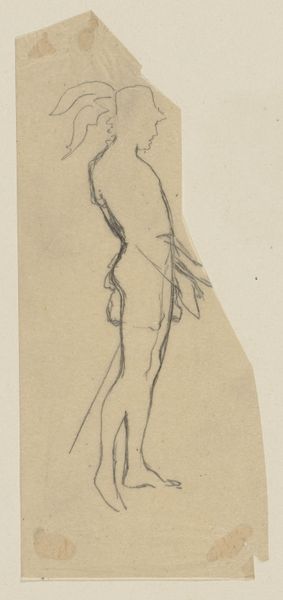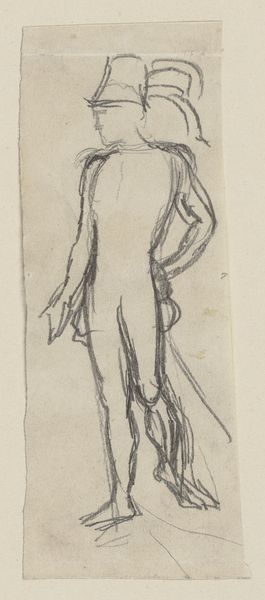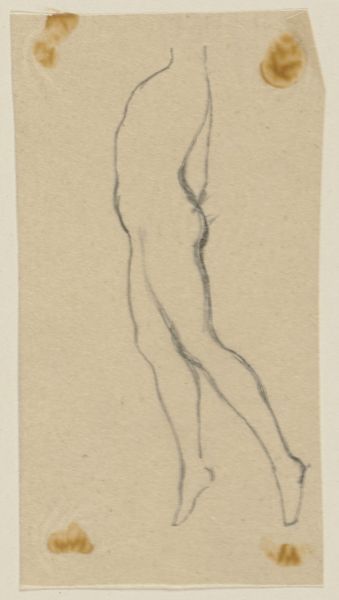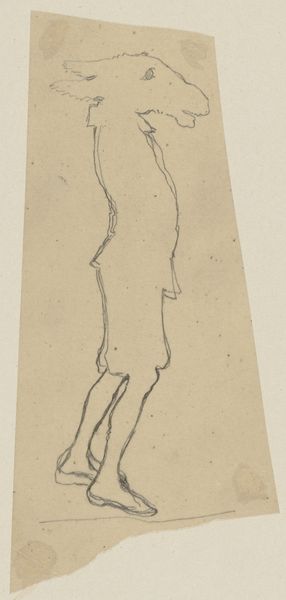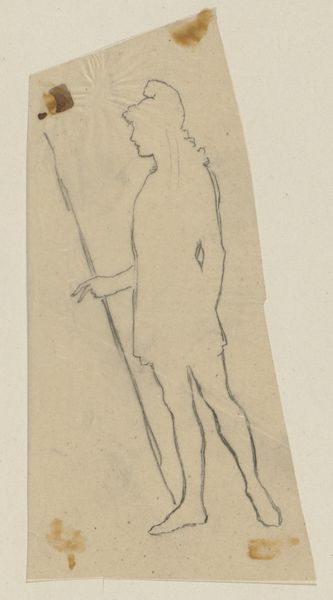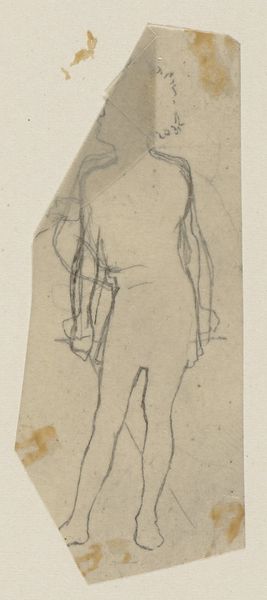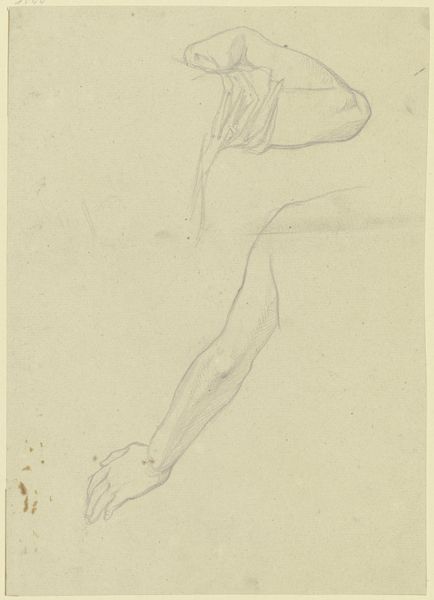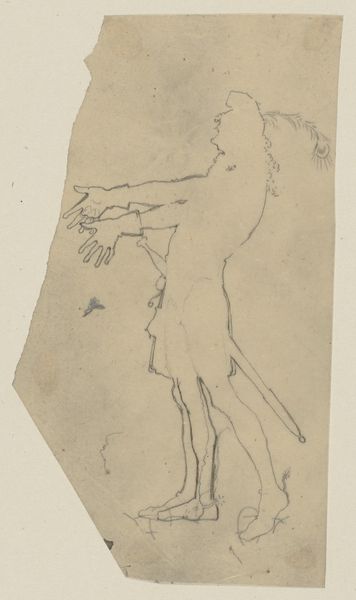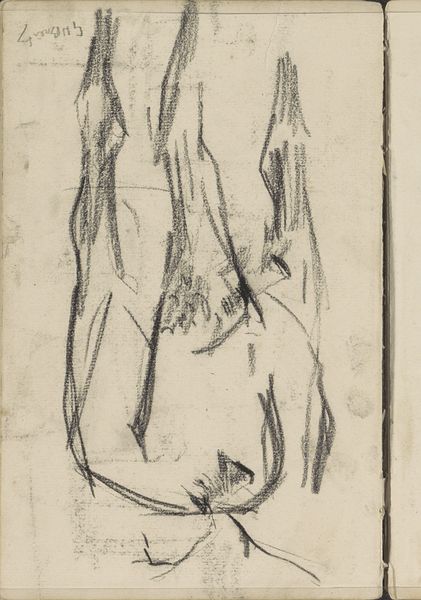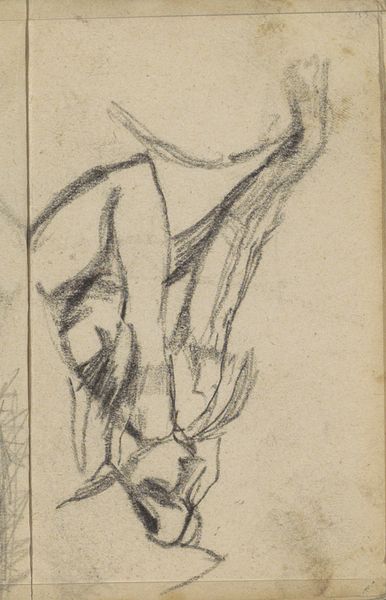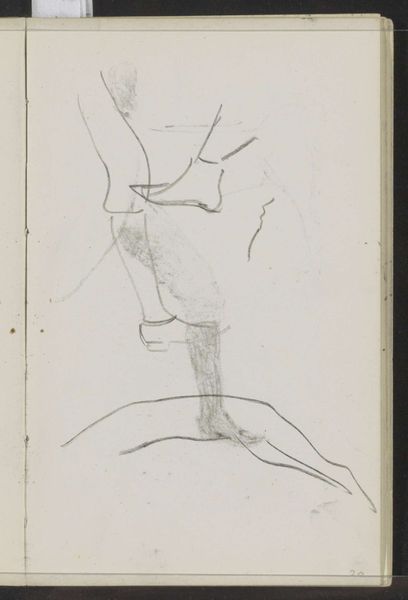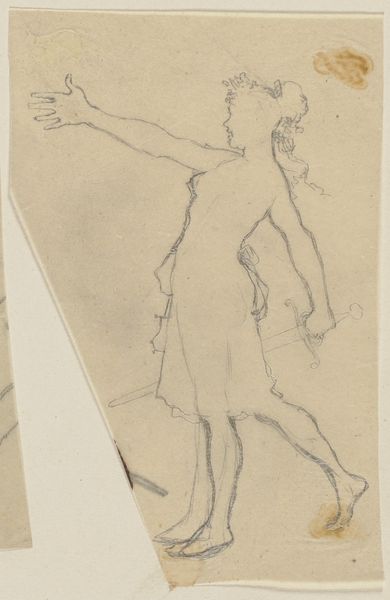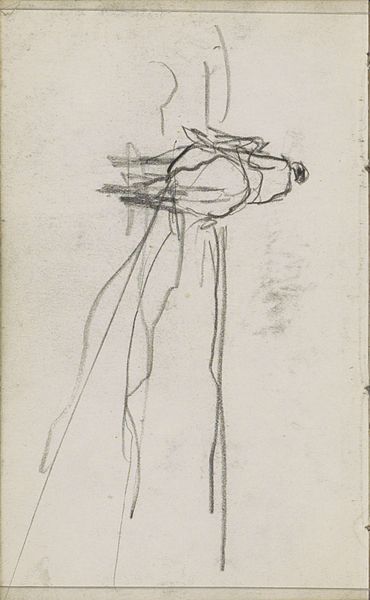
Copyright: Public Domain
Editor: This pencil drawing, "Unterkörper Oberons, nackt und schwebend, nach links," which roughly translates to "Lower Body of Oberon, Nude and Floating, to the Left," was created around 1867-68 by Paul Konewka. It's an ethereal depiction of, well, exactly what the title says! The lightness of the rendering feels dreamy, almost like a fleeting thought. What do you make of this fragment? Curator: It's fascinating how Konewka chooses to depict Oberon, the king of the fairies, in such a fragmented way. What do the symbols tell us? Why isolate the lower body, and why depict it floating? The legs themselves become a kind of symbol, suggesting a being in transition, caught between worlds perhaps? The "floating" aspect links it to the Romantic era's fascination with the sublime and the rejection of the earthly. Editor: That makes a lot of sense. The fragmented nature almost feels… incomplete, as if we're only catching a glimpse of something much grander. Curator: Exactly. And consider the time. The mid-19th century was a period of great social and technological change, leading to anxieties and a renewed interest in mythology and the supernatural. This isolated, floating figure speaks to those anxieties, doesn't it? The body as a site of vulnerability, untethered from the known world. Are we seeing an idealized classical nude figure or is Konewka drawing upon existing symbolic imagery to communicate cultural narratives? Editor: Definitely. I see the cultural link between the figure's fragmentation, which makes Oberon relatable and vulnerable, and that era of dramatic cultural shifts, which I'm experiencing as a young person, myself! Curator: Yes! This is where history, psychology, and symbolism converge, revealing layers of meaning. Each line contributes to a cultural memory we share about Romantic art. Editor: I see that now; thank you for pointing it out. It makes me appreciate the work even more. I never thought about those intersections with symbols and the subconscious like that. Curator: That's the magic of art, isn't it? To see ourselves reflected in images from the past.
Comments
No comments
Be the first to comment and join the conversation on the ultimate creative platform.

